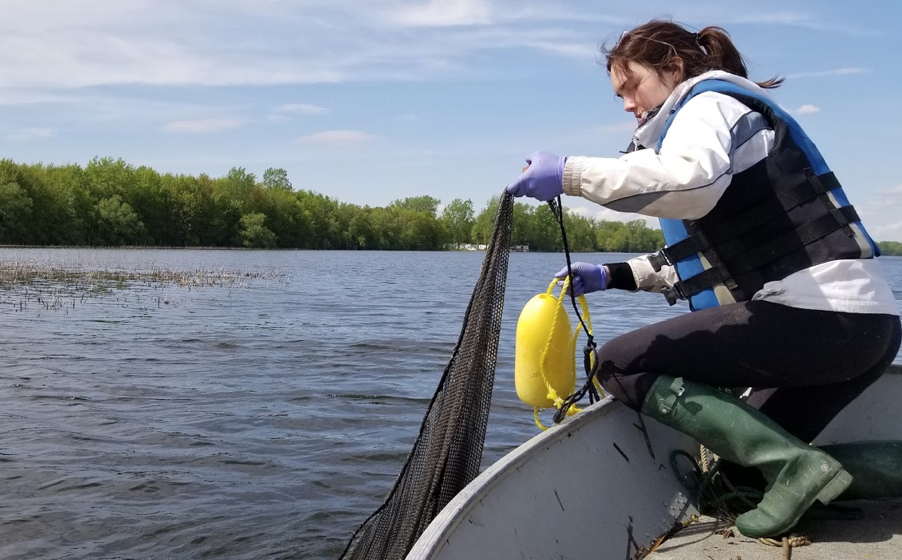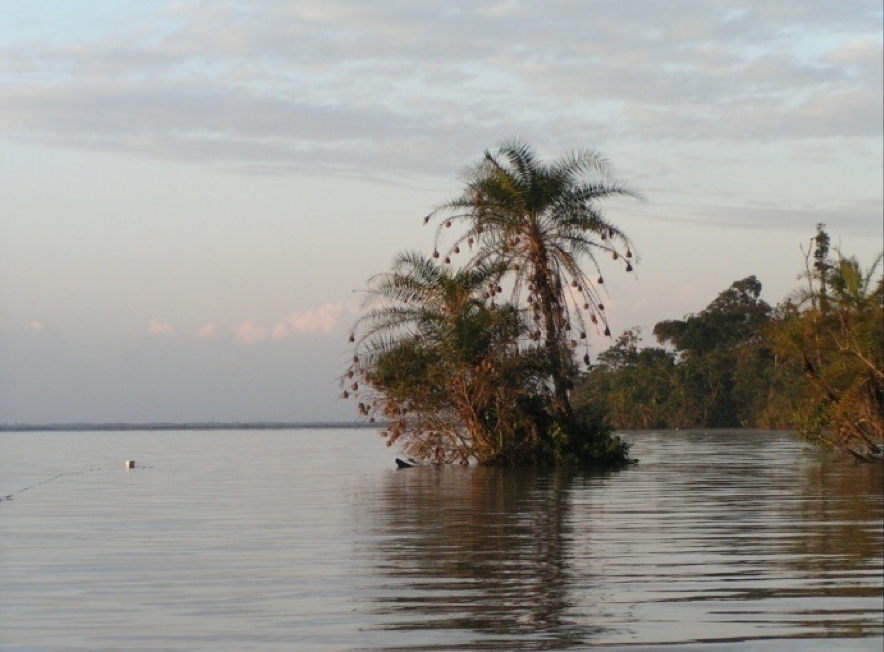
The McGill Bieler School of Environment has announced its first annual round of Spark and Ignite funded research projects. Spark and Ignite are ongoing funding programs designed to help the BSE continue its important work to find interdisciplinary solutions to complex environmental challenges. Among the projects are two that examine changes in aquatic biodiversity and fishing sustainability – from the St. Lawrence River to Lake Nabugabo in Uganda.
The Changing St. Lawrence River
“The St. Lawrence River has been radically transformed within a span of a few human generations,” says Anthony Ricciardi, Professor of Invasion Ecology & Aquatic Ecosystems in the Bieler School of Environment and Redpath Museum.
“Since 1960, following the opening of the seaway, transoceanic ship traffic has become frequent, the watershed has become increasingly urbanized, and climate change has caused water levels to drop and water temperatures to rise.”

Another major factor since the 1990s has been a series of species invasions by Eurasian mussels and fishes, linked to subsequent changes to biodiversity. “For example, populations of native mussels – the most imperilled faunal group in North America – have disappeared in many areas following the zebra mussel invasion. Fish communities have been altered, and increasing numbers of invasive fishes are being caught, in place of natives, by commercial fishers, for whom these species have no economic value.”
Ricciardi’s Spark project, Drivers of rapid ecological change in the St. Lawrence River, combines his specialization in invasion ecology and aquatic ecosystems, with expertise in experimental community ecology from Andy Gonzalez (Professor in the Department of Biology and Bieler School of Environment Associate) and in multivariate statistical methods from Zofia Taranu (Research Scientist at Environment and Climate Change Canada). It will oversee graduate students conducting field work and assembling a database to quantify temporal patterns in the species richness of fish and invertebrate communities within the ~300 km river section from the Lake Ontario outflow to Lac Saint Pierre. The goal will be to relate these patterns to increasing surface water temperatures and points in time in which invasions occurred, thereby producing the first large-scale analysis of changes to biodiversity in the river over time and space.
“We expect the data to reveal how fast and to what extent native species have declined, and some of the recent drivers responsible,” notes Ricciardi. “The results should help managers to quantify and prioritize biodiversity threats in the river.” Preliminary results will be used as proof-of-concept in an application for an NSERC Alliance grant to fund a large-scale, multi-site field study that will aim to characterize patterns and drivers of biodiversity change in detail.
Resilience in a Ugandan lake
Freshwater capture fisheries are fundamental sources of food security in the Global South, particularly in Africa and Asia. “Lake Victoria is the largest tropical lake in the world and Africa’s most important inland fishery,” explains Ismael Vaccaro, an environmental anthropologist and Associate Professor in the Bieler School of Environment and Department of Anthropology. “However, the lake experienced a series of dramatic transformations over the past century including over-fishing and introduction of non-native fishes including the predatory Nile perch. One small native species, Rastrineobola argentea (known locally as mukene) increased in biomass, leading to development of artisanal and commercial fisheries for this species in Lake Victoria and other lakes including Lake Nabugabo: a satellite lake of the larger Victoria and the focus of this study.”

The Spark study, Rapidly Changing Socioecological Systems: Lessons from Lake Nabugabo, Uganda, is a collaboration with Lauren Chapman, Professor in the Department of Biology and Bieler School of Environment Associate, and a specialist in aquatic ecology and conservation in Africa. It seeks to understand how Lake Nabugabo, located in Uganda, East Africa, despite being under an enormous amount of human pressure, has proven to be extremely resilient.
“Between 2008 and 2019, the mukene fishery in Lake Nabugabo intensified. However, over the same time period there was a dramatic decline in mukene abundance in the lake. Thus, we have a system where a declining resource in the lake is not reflected in a decrease in harvest, most probably due to rapid changes in fisher strategies,” says Chapman.
The study, implemented at Chapman’s field site in Uganda, will involve carrying out monthly sampling and interviews with fishers to develop a chronology of their strategies over a decade of rapid changes in fish abundance and public policy, to understand how policies, fishers, and fish species behave and interact with each other, and the impacts on biodiversity and food security.
“Lake Nabugabo provides a perfect study case to explore and quantify interactions between fish population dynamics and human users in a very complex but spatially-limited socioecological system,” says Chapman.
The research project will combine ecological, economic, and political data to understand why and when fishers pivot to different target species, and why catch rates for some species continue to climb while their abundance in the lakes dramatically declines. The project’s results should be able to provide frameworks for public policies in this field, aligning with the Bieler School of Environment’s mission to understand complex socioecological systems and advance biodiversity study and protection.
